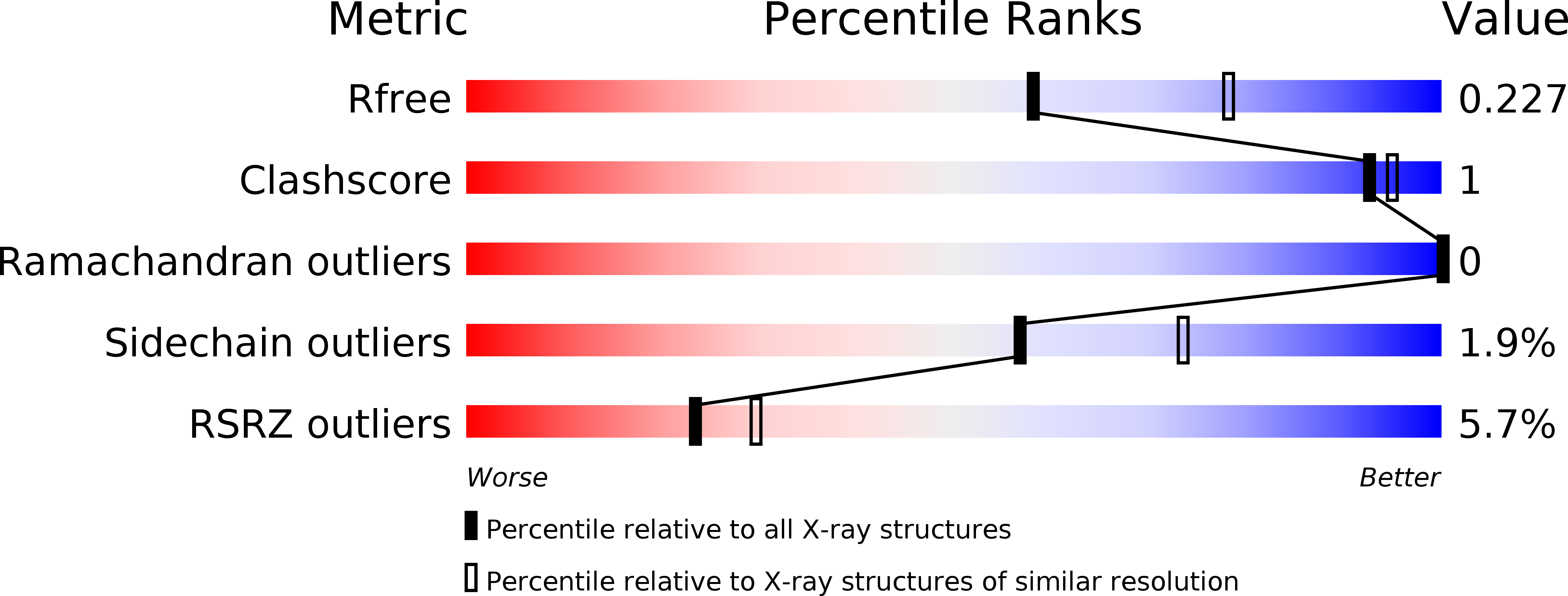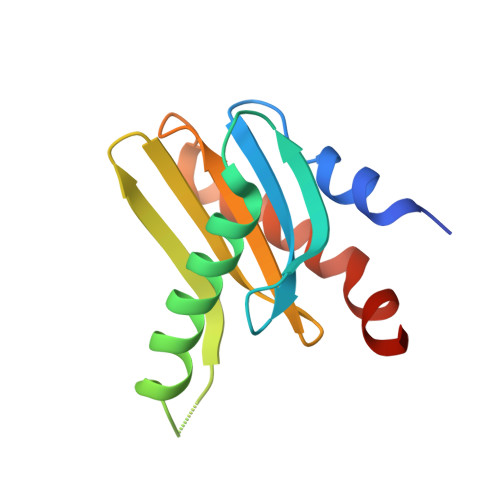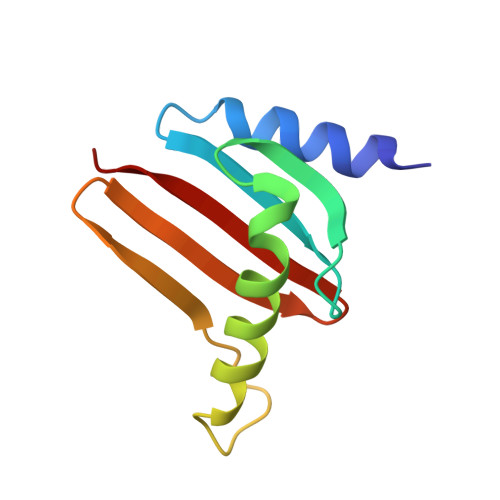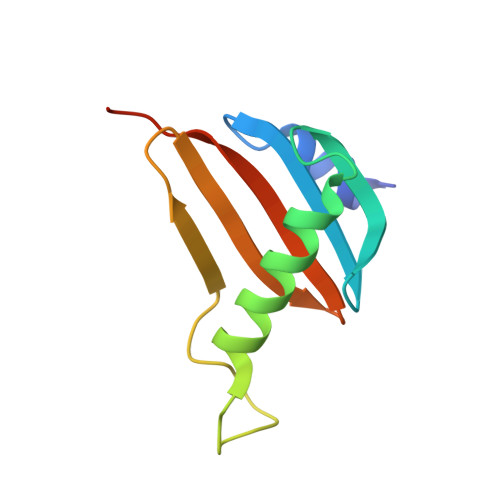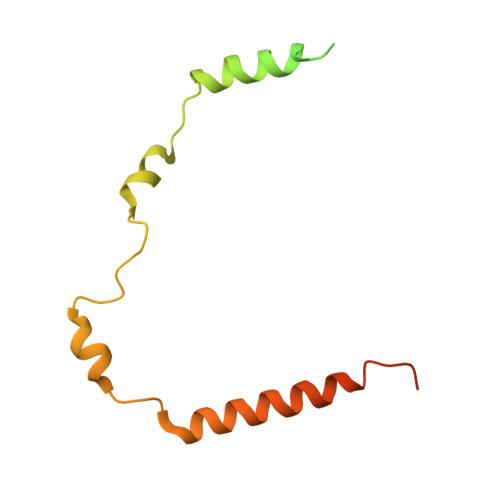Crystal structure of the human lysosomal mTORC1 scaffold complex and its impact on signaling.
de Araujo, M.E.G., Naschberger, A., Furnrohr, B.G., Stasyk, T., Dunzendorfer-Matt, T., Lechner, S., Welti, S., Kremser, L., Shivalingaiah, G., Offterdinger, M., Lindner, H.H., Huber, L.A., Scheffzek, K.(2017) Science 358: 377-381
- PubMed: 28935770
- DOI: https://doi.org/10.1126/science.aao1583
- Primary Citation of Related Structures:
6EHP, 6EHR - PubMed Abstract:
The LAMTOR [late endosomal and lysosomal adaptor and MAPK (mitogen-activated protein kinase) and mTOR (mechanistic target of rapamycin) activator] complex, also known as "Ragulator," controls the activity of mTOR complex 1 (mTORC1) on the lysosome. The crystal structure of LAMTOR consists of two roadblock/LC7 domain-folded heterodimers wrapped and apparently held together by LAMTOR1, which assembles the complex on lysosomes. In addition, the Rag guanosine triphosphatases (GTPases) associated with the pentamer through their carboxyl-terminal domains, predefining the orientation for interaction with mTORC1. In vitro reconstitution and experiments with site-directed mutagenesis defined the physiological importance of LAMTOR1 in assembling the remaining components to ensure fidelity of mTORC1 signaling. Functional data validated the effect of two short LAMTOR1 amino acid regions in recruitment and stabilization of the Rag GTPases.
Organizational Affiliation:
Division of Cell Biology, Biocenter, Medical University of Innsbruck, 6020 Innsbruck, Austria.







